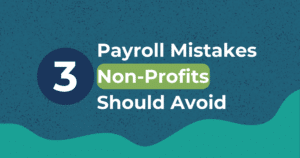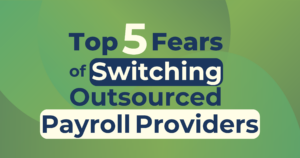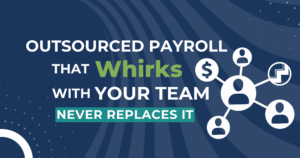Amerisleep, a mattress retailer, surveyed 2,000 people to determine the most common nightmares causing people to jolt out of bed or have heart palpitations. The “feeling of falling,” topped the list with nearly 65% of respondents reported having this dream. This was followed by being chased, death and feeling lost or trapped. (Further down the list we have the mortifying “being naked in public” at 21%, and the super-creepy “bugs crawling on you” at nearly 15%.)
If you work in HR or are a small business owner, it’s possible you have a more real-life scenario keeping you up at night: managing your payroll.
While getting paid is generally a great thing, the process of paying people – tracking hours, filing taxes and managing benefits – can be time-consuming and overwhelming. Not to mention the anxiety that comes with staying compliant with evolving federal, state and local regulations or fears of making a costly payroll error like miscalculating overtime.
There’s good news. While we don’t have ideas on how to stop your dreams about falling or losing your teeth (a whopping one-third of respondents!) we do have three tips that can help tame your payroll nightmare:
- Communicate. Make sure your policies are clear on PTO, holidays, overtime pay, sick days and expense reimbursements. This will get everyone on the same page from day one and allows you to point to a policy when there’s a dispute.
- Automate. If you’re manually calculating hours and withholdings you’re losing time and money while increasing your risk for errors. (And errors and missed deadlines can mean more lost money in the form of IRS penalties.) If you’re tracking your payroll on paper you may be just one flood or fire away from total disaster. Other benefits of automation include the ability to run reports and cloud-based systems mean you can access payroll information from anywhere 24/7.
- Delegate. There’s no need to absorb all of the payroll and HCM functions yourself. For example, a direct manager can be responsible for fixing missed punches instead of an HR director. Payroll managers should pass off the approval of time-off requests to supervisors. Empowering others is smart leadership.
For some of you, it’s time to pass the buck entirely.
An outsourced payroll partner can make your payroll a dream–filing your taxes and keeping track of regulations and deadlines for you.
Not sure if it’s time to outsource? Or maybe you are already using an outsourced payroll provider who isn’t cutting the mustard and it’s time for a switch. If so, ask your new provider these key questions.
In Your Corner
We’d be happy to answer your questions about outsourcing and taming your payroll nightmare. Schedule a call to talk with us.







